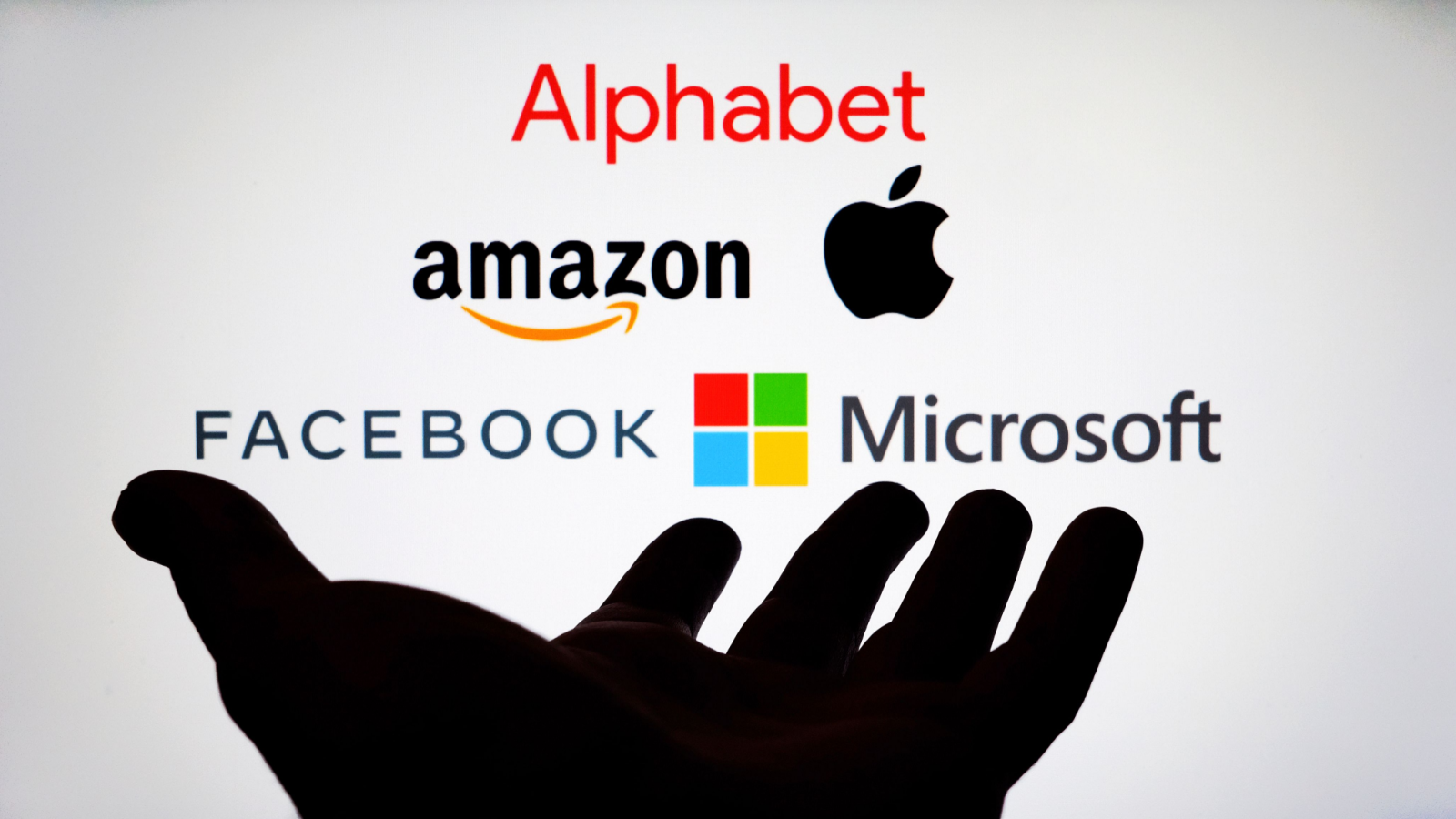Weekly Stock Grader Analysis: Upgrades & Downgrades on Top Blue-Chip Stocks

Are your holdings on the move? See my updated ratings for 125 stocks.

Source: iQoncept/Shutterstock.com
During these busy times, it pays to stay on top of the latest profit opportunities. And today’s blog post should be a great place to start. After taking a close look at the latest data on institutional buying pressure and each company’s fundamental health, I decided to revise my Stock Grader recommendations for 125 big blue chips. Chances are that you have at least one of these stocks in your portfolio, so you may want to give this list a skim and act accordingly.
Upgraded: Buy to Strong Buy
| Symbol | Company Name | Quantitative Grade | Fundamental Grade | Total Grade |
|---|---|---|---|---|
| AU | Anglogold Ashanti PLC | A | C | A |
| BK | Bank of New York Mellon Corp | A | C | A |
| CBOE | Cboe Global Markets Inc | A | C | A |
| CHKP | Check Point Software Technologies Ltd. | A | C | A |
| COR | Cencora, Inc. | A | C | A |
| DASH | DoorDash, Inc. Class A | A | C | A |
| DB | Deutsche Bank Aktiengesellschaft | A | B | A |
| DRI | Darden Restaurants, Inc. | A | C | A |
| DTE | DTE Energy Company | A | C | A |
| DTM | DT Midstream, Inc. | A | C | A |
| EBAY | eBay Inc. | A | B | A |
| ETR | Entergy Corporation | A | B | A |
| MAA | Mid-America Apartment Communities, Inc. | A | B | A |
| ONON | On Holding AG Class A | A | B | A |
| SMMT | Summit Therapeutics Inc | A | C | A |
| SO | Southern Company | A | C | A |
Downgraded: Strong Buy to Buy
| Symbol | Company Name | Quantitative Grade | Fundamental Grade | Total Grade |
|---|---|---|---|---|
| AFL | Aflac Incorporated | A | D | B |
| GME | GameStop Corp. Class A | A | B | B |
| KR | Kroger Co. | A | C | B |
| LYG | Lloyds Banking Group plc Sponsored ADR | A | B | B |
| LYV | Live Nation Entertainment, Inc. | A | C | B |
| MO | Altria Group, Inc. | A | D | B |
| PNW | Pinnacle West Capital Corp | A | D | B |
| PODD | Insulet Corporation | A | C | B |
| RGLD | Royal Gold, Inc. | A | B | B |
| SAN | Banco Santander S.A. Sponsored ADR | A | B | B |
| TRP | TC Energy Corporation | A | C | B |
| UNM | Unum Group | A | D | B |
Upgraded: Hold to Buy
| Symbol | Company Name | Quantitative Grade | Fundamental Grade | Total Grade |
|---|---|---|---|---|
| AMH | American Homes 4 Rent Class A | B | C | B |
| ANET | Arista Networks, Inc. | B | B | B |
| AXP | American Express Company | B | C | B |
| BMO | Bank of Montreal | B | B | B |
| BX | Blackstone Inc. | B | C | B |
| CCI | Crown Castle Inc. | A | D | B |
| CF | CF Industries Holdings, Inc. | B | B | B |
| CLX | Clorox Company | B | C | B |
| CTSH | Cognizant Technology Solutions Corporation Class A | B | B | B |
| CVS | CVS Health Corporation | B | B | B |
| DE | Deere & Company | B | D | B |
| DOX | Amdocs Limited | B | C | B |
| EQIX | Equinix, Inc. | A | B | B |
| EXE | Expand Energy Corporation | B | C | B |
| GWW | W.W. Grainger, Inc. | B | C | B |
| HCA | HCA Healthcare Inc | B | C | B |
| HLT | Hilton Worldwide Holdings Inc. | B | C | B |
| HON | Honeywell International Inc. | B | C | B |
| IHG | InterContinental Hotels Group PLC Sponsored ADR | B | C | B |
| JNPR | Juniper Networks, Inc. | B | B | B |
| LII | Lennox International Inc. | B | C | B |
| LUV | Southwest Airlines Co. | B | C | B |
| MSCI | MSCI Inc. Class A | B | C | B |
| PNR | Pentair plc | B | C | B |
| PWR | Quanta Services, Inc. | B | C | B |
| RMD | ResMed Inc. | B | C | B |
| RNR | RenaissanceRe Holdings Ltd. | B | C | B |
| ROST | Ross Stores, Inc. | B | C | B |
| SNA | Snap-on Incorporated | B | C | B |
| SYK | Stryker Corporation | B | C | B |
| UDR | UDR, Inc. | B | B | B |
| WAB | Westinghouse Air Brake Technologies Corporation | B | C | B |
| YUM | Yum! Brands, Inc. | B | C | B |
Downgraded: Buy to Hold
| Symbol | Company Name | Quantitative Grade | Fundamental Grade | Total Grade |
|---|---|---|---|---|
| AAPL | Apple Inc. | C | C | C |
| AIG | American International Group, Inc. | C | C | C |
| AMCR | Amcor PLC | C | C | C |
| AMGN | Amgen Inc. | D | C | C |
| BEPC | Brookfield Renewable Holdings Corporation Class A | C | C | C |
| BIP | Brookfield Infrastructure Partners L.P. | C | C | C |
| CL | Colgate-Palmolive Company | C | C | C |
| CTVA | Corteva Inc | C | C | C |
| EBR | Centrais Eletricas Brasileiras SA-Eletrobras Sponsored ADR | C | C | C |
| HD | Home Depot, Inc. | C | C | C |
| LDOS | Leidos Holdings, Inc. | C | C | C |
| LMT | Lockheed Martin Corporation | C | B | C |
| NWSA | News Corporation Class A | C | B | C |
| PANW | Palo Alto Networks, Inc. | B | C | C |
| PCTY | Paylocity Holding Corp. | C | B | C |
| PHG | Koninklijke Philips N.V. Sponsored ADR | C | C | C |
| PKG | Packaging Corporation of America | C | C | C |
| RACE | Ferrari NV | C | B | C |
| TEAM | Atlassian Corp Class A | C | C | C |
| TSN | Tyson Foods, Inc. Class A | C | B | C |
| WWD | Woodward, Inc. | C | C | C |
Upgraded: Sell to Hold
| Symbol | Company Name | Quantitative Grade | Fundamental Grade | Total Grade |
|---|---|---|---|---|
| AME | AMETEK, Inc. | C | C | C |
| BAX | Baxter International Inc. | D | C | C |
| BMRN | BioMarin Pharmaceutical Inc. | D | B | C |
| CG | Carlyle Group Inc | C | C | C |
| CNC | Centene Corporation | D | B | C |
| CP | Canadian Pacific Kansas City Limited | D | B | C |
| DECK | Deckers Outdoor Corporation | D | B | C |
| E | Eni S.p.A. Sponsored ADR | C | C | C |
| EQNR | Equinor ASA Sponsored ADR | C | C | C |
| IDXX | IDEXX Laboratories, Inc. | C | C | C |
| ITW | Illinois Tool Works Inc. | C | C | C |
| LKQ | LKQ Corporation | C | C | C |
| LULU | lululemon athletica inc. | D | C | C |
| MAR | Marriott International, Inc. Class A | C | D | C |
| NVR | NVR, Inc. | C | D | C |
| TSCO | Tractor Supply Company | C | C | C |
| UHAL | U-Haul Holding Company | C | D | C |
| URI | United Rentals, Inc. | C | C | C |
Downgraded: Hold to Sell
| Symbol | Company Name | Quantitative Grade | Fundamental Grade | Total Grade |
|---|---|---|---|---|
| ASX | ASE Technology Holding Co., Ltd. Sponsored ADR | D | B | D |
| CHD | Church & Dwight Co., Inc. | D | C | D |
| EC | Ecopetrol SA Sponsored ADR | D | C | D |
| EG | Everest Group, Ltd. | D | D | D |
| FSLR | First Solar, Inc. | D | D | D |
| HSY | Hershey Company | D | D | D |
| LOGI | Logitech International S.A. | D | C | D |
| PHM | PulteGroup, Inc. | D | C | D |
| PINS | Pinterest, Inc. Class A | F | B | D |
| PSTG | Pure Storage, Inc. Class A | D | C | D |
| QCOM | QUALCOMM Incorporated | F | B | D |
| SCCO | Southern Copper Corporation | D | C | D |
| SW | Smurfit Westrock PLC | D | C | D |
| UNH | UnitedHealth Group Incorporated | D | C | D |
Upgraded: Strong Sell to Sell
| Symbol | Company Name | Quantitative Grade | Fundamental Grade | Total Grade |
|---|---|---|---|---|
| CDW | CDW Corporation | F | C | D |
| CNI | Canadian National Railway Company | F | C | D |
| GPN | Global Payments Inc. | F | C | D |
| H | Hyatt Hotels Corporation Class A | D | C | D |
| HST | Host Hotels & Resorts, Inc. | F | C | D |
| PPG | PPG Industries, Inc. | F | C | D |
| TGT | Target Corporation | F | C | D |
Downgraded: Sell to Strong Sell
| Symbol | Company Name | Quantitative Grade | Fundamental Grade | Total Grade |
|---|---|---|---|---|
| BP | BP PLC Sponsored ADR | F | D | F |
| GFS | GlobalFoundries Inc. | F | D | F |
| HOLX | Hologic, Inc. | F | D | F |
| REGN | Regeneron Pharmaceuticals, Inc. | F | C | F |
To stay on top of my latest stock ratings, plug your holdings into Stock Grader, my proprietary stock screening tool. But, you must be a subscriber to one of my premium services. Or, if you are a member of one of my premium services, you can go here to get started.
Sincerely,


Louis Navellier
Editor, Market 360
Article printed from InvestorPlace Media, https://investorplace.com/market360/2025/05/20250525-blue-chip-upgrades-downgrades/.
©2025 InvestorPlace Media, LLC

















